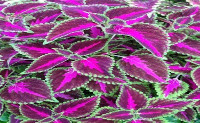Plectranthus scutellarioides Leaf Extract Protective Effects Against Isoniazid and Rifampicin-Induced Hepatotoxicity in Wistar Rats http://www.doi.org/10.26538/tjnpr/v6i12.6
Main Article Content
Abstract
Plectranthus scutellarioides has been studied to have antioxidant and anti-inflammatory activity which shows potential with hepatoprotection effect. This study determined the hepatoprotective activity of ethanol extract of P. scutellarioides leaves. The rats were divided into five groups: PSE (Plectranthus scutellarioisdes leaves extract) 150, 300, and 600 mg/kg, negative control, and positive control (Silymarin). All groups were given the test substances concurrently with isoniazid and rifampicin (50 mg/kg) p.o every day for 28 days. The results showed that the PSE could prevent liver damage as indicated by lower levels of total bilirubin, direct bilirubin,albumin, AST, and ALT than negative controls (p<0.005). Histological observations of the liver confirmed these results, and this dose-dependent hepatoprotective activity was in line with the lipid peroxidation inhibition. P. scutellarioides extract at a dose of 600 mg/kg showed the best activity, comparable (p> 0.05) to Silymarin. The data suggest that the co-administration of P. scutellarioides leaf extract with isoniazid and rifampicin could prevent the liver injury caused by these drugs.
Downloads
Article Details
Section

This work is licensed under a Creative Commons Attribution-NonCommercial-NoDerivatives 4.0 International License.
How to Cite
References
Dong Y, Huang J, Lin X, Zhang S, Jiao Y, Liang T, Chen Z, Huang R. Hepatoprotective effects of Yulangsan polysaccharide against isoniazid and rifampicin-induced liver injury in mice. J Ethnopharmacol. 2014 Feb 27;152(1):201–6.
Zhao H, Wang Y, Zhang T, Wang Q, Xie W. Drug-Induced Liver Injury from Anti-Tuberculosis Treatment: A Retrospective Cohort Study. Med Sci Monit. 2020;26:e920350.
Ramappa V, Aithal GP. Hepatotoxicity Related to Antituberculosis Drugs: Mechanisms and Management. J Clin Exp Hepatol. 2013;3(1):37–49.
Shakya AK. Drug-induced hepatotoxicity and hepatoprotective medicinal plants: A review. Indian J Pharm Educ Res. 2020;54(2):234–50.
Basheer AS, Siddiqui A, Paudel YN, Hassan MQ, Imran M, Najmi AK, Akhtar M. Hepatoprotective and antioxidant effects of fish oil on isoniazid-rifampin induced hepatotoxicity in rats. PharmaNutrition [Internet]. 2017;5(1):29–33. Available from:
http://dx.doi.org/10.1016/j.phanu.2017.01.002
Moelyono MW, Uswatun A, Rochjana H, Diantini A, Mus I, Sumiwi SA, Iskandar Y, Susilawati, Y. Antioxidant Activity of Plectranthus scutellarioides (L.) Leaves. J Farm Indones. 2016;8(1):271–6.
Levita J, Sumiwi SA, Pratiwi TI, Ilham E, Sidiq SP, Moektiwardoyo M. Pharmacological Activities of Plectranthus scutellarioides (L.) R.Br. Leaves Extract on Cyclooxygenase and Xanthine Oxidase Enzymes. J Med Plants Res. 2016;10(20):261–9.
Kubínová R, Gazdová M, Hanáková Z, Jurkaninová S, Acqua SD, Cvačka J. Humpa O. South African Journal of Botany New diterpenoid glucoside and fl avonoids from Plectranthus scutellarioides ( L .) R . Br . 2019;120:286–90.
Indonesia M of HR of. Farmakope Herbal Indonesia (Indonesian Herb Pharmacopoeia). Jakarta: Ministry of Health Republic of Indonesia; 2008. 221 p.
Kiernan JA. Histological and Histochemical Methods. 5th ed. Chatham, UK: Scion; 2015.
Siddique W, Rashid N, Warraich NY, Asghar A, Talat H, Zia AE, Fatima A. Evaluation of histopathological changes in isoniazid and rifampicin induced liver injury and protective role of zinc sulfate in Albino rats. Pakistan J Med Heal Sci. 2019;13(4):809–16.
Björnsson ES. Epidemiology, Predisposing Factors, and Outcomes of Drug-Induced Liver Injury. Vol. 24, Clinics in Liver Disease. W.B. Saunders; 2020. p. 1–10.
Teschke R, Danan G. Drug Induced Liver Injury: Mechanisms, Diagnosis, and Clinical Management. In: Liver Diseases. Springer International Publishing; 2020. p. 95–105.
Kaplowitz N. Drug-Induced Liver Injury. Clin Infect Dis. 2004;38(Suppl 2):44–8.
Tasduq SA, Kaiser P, Sharma SC, Johri RK. Potentiation of isoniazid-induced liver toxicity by rifampicin in a combinational therapy of antitubercular drugs (rifampicin, isoniazid and pyrazinamide) in Wistar rats: A toxicity profile study. Hepatol Res [Internet]. 2007 Oct 1 [cited 2020 Apr 15];37(10):845–53. Available from: http://doi.wiley.com/10.1111/j.1872-034X.2007.00129.x
Kumar V, Abbas AK, Aster JC. Robbins, Basic Pathology. The British Journal of Psychiatry. Elsevier Inc; 2018.
Lee EH, Baek SY, Park JY, Kim YW. Rifampicin activates AMPK and alleviates oxidative stress in the liver as mediated with Nrf2 signaling. Chem Biol Interact [Internet]. 2020;315(108889):1–8. Available from: https://doi.org/10.1016/j.cbi.2019.108889
Mccorry LK, Zdanowicz MM, Gonnella CY. Essentials of Human Physiology and Pathophysiology for Pharmacy and Allied Health. The British Journal of Psychiatry. Routledge, Taylor & Francis Group; 2019.
Vargas-Mendoza N, Madrigal-Santillán E, Morales-González Á, Esquivel-Soto J, Esquivel-Chirino C, García-Luna y González-Rubio MG, et al. Hepatoprotective effect of silymarin. World J Hepatol. 2014;6(3):144–9.
Tao L, Qu X, Zhang Y, Song Y, Zhang SX. Prophylactic Therapy of Silymarin (Milk Thistle) on Antituberculosis Drug-Induced Liver Injury: A Meta-Analysis of Randomized Controlled Trials. Can J Gastroenterol Hepatol. 2019;1–11.
Karimi G, Vahabzadeh M, Lari P, Rashedinia M, Moshiri M. “ Silymarin ”, a Promising Pharmacological Agent for Treatment of Diseases. 2011;14(4):308–17.
Junqueira L, Carneiro J. Basic Histology: Text & Atlas. The McGraw-Hill Companies. 2007.
Ibrahim A, Payus AO. “A Double-Edged Sword”: A Case Report on Liver Injury Side-Effect of Anti-Tuberculosis Drug on Liver Tuberculosis Patient". Borneo J Med Sci [Internet]. 2018;14(1):49–53.
Shenoy S, Kumar H, Thashma, Nayak V, Prabhu K, Pai P, Warrier I, Somayaji, Madhav V, Bairy KL, Kishore A. Hepatoprotective activity of Plectranthus amnoinicus against paracetamol induced hepatotoxicity in rats. Vol. 1, International Journal of Pharmacology and Clinical Sciences. 2012. p. 32–8. Available from: https://www.ijpcs.net/article/46
Nwidu LL, Oboma YI. Telfairia occidentalis (Cucurbitaceae) pulp extract mitigates rifampicin-isoniazid-induced hepatotoxicity in an in vivo rat model of oxidative stress. J Integr Med [Internet]. 2019;17(1):46–56. Available from: https://doi.org/10.1016/j.joim.2018.11.008
Eram S, Mujahid M, Bagga P, Ahsan F, Rahman MA. Hepatoprotective Evaluation of Galanga (Alpinia Officinarum) Rhizome Extract against Antitubercular Drugs Induced Hepatotoxicity in Rats. J Herbs, Spices Med Plants. 2020;26(2):113–25.




